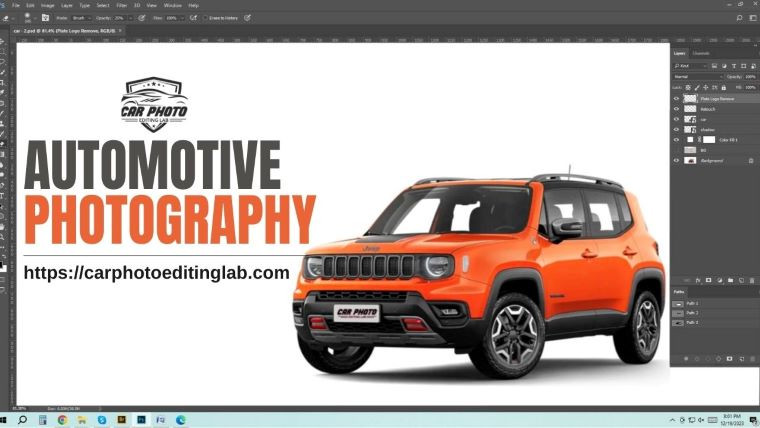-
Contact us with Whatsapp:
+8801734997063 -
Mail Us:
[email protected] -
Service Hours
24/7
Some Car Photo Editing Mistakes

Jan 2024
- 10 Jan 2024
- Car Photo Editing
- 0 Views
Some Car Photo Editing Mistakes
Photo editing allows individuals to enhance the visual appeal of their images. By adjusting elements such as brightness, contrast, and saturation, photographers can give their photos new life. This enhancement is not merely about making images brighter or more colorful; it's about creating a visual narrative that captivates and engages viewers. But sometimes our pictures look bad due to some errors in editing. Your pictures look bad and untransparent. As a result, from social media posts to marketing materials, an inadvisable-edited image diminishes brand values and leaves a negative impression on the audience. In this article, we explore some errors in photo editing and provide insights on how to avoid them.
What is Photo Editing Mistakes?
Photo editing mistakes refer to errors or shortcomings that can occur during the process of editing images using photo editing software. These mistakes can negatively impact the quality and aesthetics of the final image. There are over processing the idea, leading to an exaggerated or unnatural look, incorrect color adjustments, inaccurate color representation, or improper retouching techniques that create unrealistic or unnatural effects. These mistakes can destroy your brand marketing. FREE TRIAL
Some Common Photo Editing Mistakes
In the captivating world of photography, the art of editing plays a crucial role in transforming a raw image into a visual masterpiece. However, like any craft, photo editing is not immune to pitfalls that can inadvertently diminish the impact of an otherwise stunning photograph. Here has some errors which shedding light on some common mistakes that can subtly compromise the essence of your visual narratives.
Overuse of Filters: One of the most prevalent mistakes in photo editing is the excessive use of filters. While filters can add a unique touch to your images, overdoing it can lead to unnatural and unrealistic results. Instead, try to use filters subtly and selectively to enhance specific aspects of your photo without overshadowing the original content.
Ignoring Composition Basics: Photo editing should complement good composition, not compensate for its absence. Neglecting fundamental composition principles such as the rule of thirds, leading lines, and framing can result in an image that no amount of editing can salvage. Before diving into editing, ensure your original photo has a strong composition.
Overlooking Color Balance: Incorrect color balance is a common mistake that can drastically alter the mood and tone of your image. Pay attention to the color temperature and make adjustments as needed. Ensure that whites appear truly white, and the overall color scheme reflects the atmosphere you want to convey.
Heavy-handed Retouching: Retouching can be a powerful tool for removing imperfections or enhancing certain features. However, excessive retouching, especially on faces, can lead to an artificial and plastic appearance. Preserve the natural texture of the skin and use retouching tools judiciously to maintain authenticity.
Neglecting Detail in Shadows and Highlights: An often overlooked aspect of photo editing is the failure to retain details in both shadows and highlights. Overexposed highlights and underexposed shadows can result in a loss of information. Use tools like the histogram to ensure a balanced distribution of tones and maintain details in all areas of your image.
Not knowing about editing tools: In the professional photography world, knowledge of editing tools is often considered a valuable skill. Photographers who are not familiar with these tools may find it challenging to compete in a market where post-processing skills are highly valued. Sometimes, a great photo may have technical imperfections (like exposure issues or color balance) that can be corrected with editing tools. Without this knowledge, photographers may struggle to fix such issues. Without the ability to fine-tune images in post-processing, photographers might produce inconsistent results. But, editing tools can help maintain a consistent style across a body of work. 📞 CONTACT US
Ignoring Image Resolution: Resizing images without considering resolution can lead to pixilation and loss of image quality. When cropping or resizing, be mindful of the intended use of the image and adjust the resolution accordingly. This is particularly important when preparing images for print or online platforms with specific size requirements.
Inconsistent Editing across Photos: If you're editing a series of photos, maintain consistency in your editing style. Sudden shifts in color, tone, or style between images can be distracting and disrupt the overall flow. Establish a cohesive editing approach for a set of photos to create a visually harmonious collection. FREE TRIAL
Cropping too much: Cropping too much of a photo can have several disadvantages, depending on the context and purpose of the image. By cropping too much, you may lose important details in the image. This is especially crucial in photographs, where fine details contribute to the overall quality or enhancement. Cropping significantly can reduce the overall resolution of the image. This can impact the ability to print the photo in larger sizes without a loss of quality. Excessive cropping can alter the composition of the photo and may result in an imbalanced or awkward-looking image. The original framing and balance intended by the photographer may be compromised. Cropping too tightly for a specific use may limit the photo's adaptability for other purposes. For example, an image cropped for social media may not work as well for a print publication. GET AN ORDER
In summary, it's often a good practice to capture a well-framed shot initially and use cropping judiciously to enhance rather than compromise the image.
Sloppy background editing: Sloppy background editing in image editing can lead to several disadvantages, detracting from the overall quality and professionalism of the final image. A hasty background edit may result in visible edges around the subject, giving the image an unnatural and unpolished appearance. Artifacts, such as remnants of the original background or pixilation, can be left behind, further diminishing the image's visual appeal. Rushed background edits may neglect the importance of matching lighting and color tones between the subject and the new background. This inconsistency can create an unrealistic and jarring effect. Sloppy editing may overlook the need for realistic shadows and reflections, making the subject appear disconnected from its environment. Poorly defined or misplaced shadows can be particularly distracting and contribute to an overall lack of authenticity.
So, to avoid these disadvantages, it's crucial to invest time and effort into meticulous background editing, ensuring a seamless and natural integration of the subject into its new environment. FREE TRIAL
Ruining the image with contrast: Ruining an image with excessive contrast can have various negative effects on its visual quality. Fine textures and subtle variations in color may be obscured, leading to a less realistic and more artificial appearance. Ruining an image with high contrast can lead to overemphasized highlights and shadows. This can create harsh transitions between bright and dark areas, making the image look unnatural and unbalanced. Excessive contrast can affect the perception of colors in an image. It may lead to color shifts, oversaturation, or desideration, altering the intended color balance and making the image less appealing. High-contrast images can cause eye strain, especially if viewed for an extended period. The abrupt transitions between bright and dark areas may make it challenging for viewers to focus comfortably on the image.
However, when the term "ruining" is used, it typically implies an undesirable and negative impact on the image quality. Adjusting contrast should be done carefully to enhance the visual appeal without sacrificing the essential details and natural characteristics of the scene.
Conclusions
Concluding on the topic of photo editing mistakes, it is evident that avoiding these common pitfalls is crucial for achieving professional and visually appealing results. By steering clear of these errors, one can enhance the overall quality of their images and convey the intended message more effectively. Over-reliance on filters and effects can detract from the authenticity of a photograph. It is essential to use these tools judiciously, ensuring they complement the image rather than overpowering it.
In conclusion, avoiding these photo editing mistakes requires a combination of technical proficiency and a discerning eye. By staying mindful of these common errors, photographers and editors can elevate their work, ensuring that the final images resonate with viewers and effectively convey the intended message.
























0 Comment